Komasuki
駒透
Komasuki
Komasuki is one type of U gouges, rounded blades in the shape of a half-cylinder that are used to carve into the surface of woodcut printing blocks. “Komasuki” refers specifically to the ones that have a particularly narrow gauge.
Komasuki normally have a width of no more than 6mm and are among the most common and easy-to-manipulate tools used in carving woodblocks for woodcut printing. Komasuki come in six different widths: 1mm, 1.5mm, 2mm, 3mm, 4.5mm, and 6mm.
In carving a woodblock, after one has used a cut-out chisel to carve the borderline that will divide the portions essential for the print (those with illustrations) from the unnecessary portions (those without), one uses a komasuki to clear out the areas around those borders. This work is sometimes referred to as “applying the komasuki.” In cases when the essential portions are particularly small or narrow, or when the artist wishes to create curved cuts, for example, it is also possible to proceed directly to carving using the komasuki. Compared to the cut-out chisel and the V gouge, which carve sharp lines, the lines carved by the komasuki tend to produce a soft, warm impression when printed, thanks to the rounded ends of the carved lines. Because of the half-cylinder shape of the komasuki’s blade, one is able to carve both thin and thick lines by adjusting the strength and depth of the cut as one does with V gouge.
Because of the shape of the komasuki’s blade, it is common to nick the blade in the course of carving a block. Therefore, in order to maintain the sharpness of the instrument, it is necessary to sharpen the blade frequently. When sharpening the blade, the whetstone is kept perpendicular to the blade, which is held on an angle matching the angle of the blade and then rotated from side to side. By moving the blade in a circular fashion, one sharpens the whole blade. Komasuki with deeper half-cylinders should be moved in the shape of a figure eight on its side. Once the blade has been sharpened, the water should be completely removed using a cloth before using the tool. If the blade is going to be left unused for a long period, it should be wiped with a cloth immersed in machine oil in order to prevent rusting.
Komasuki may be purchased at stores specializing in knives and at art supply stores that carry woodblock carving equipment.
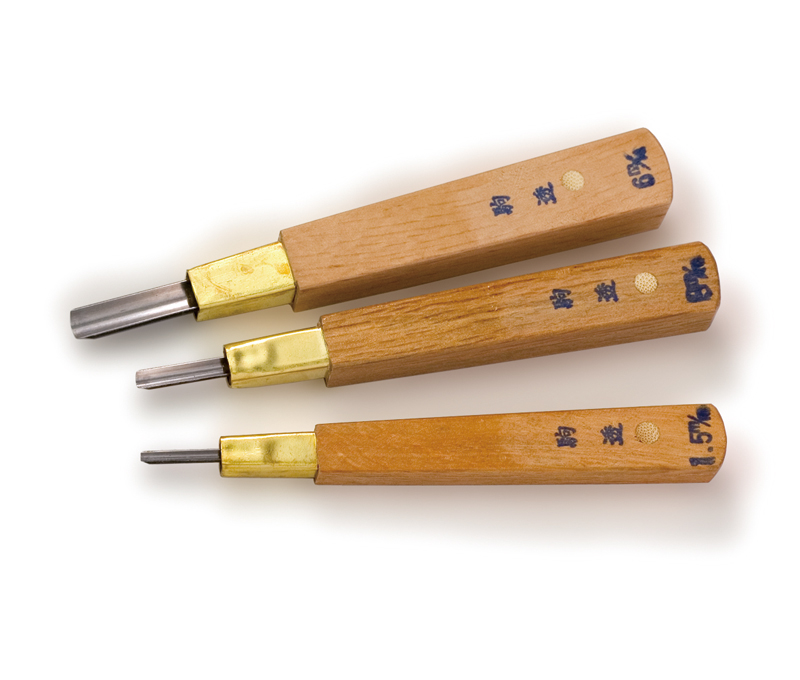
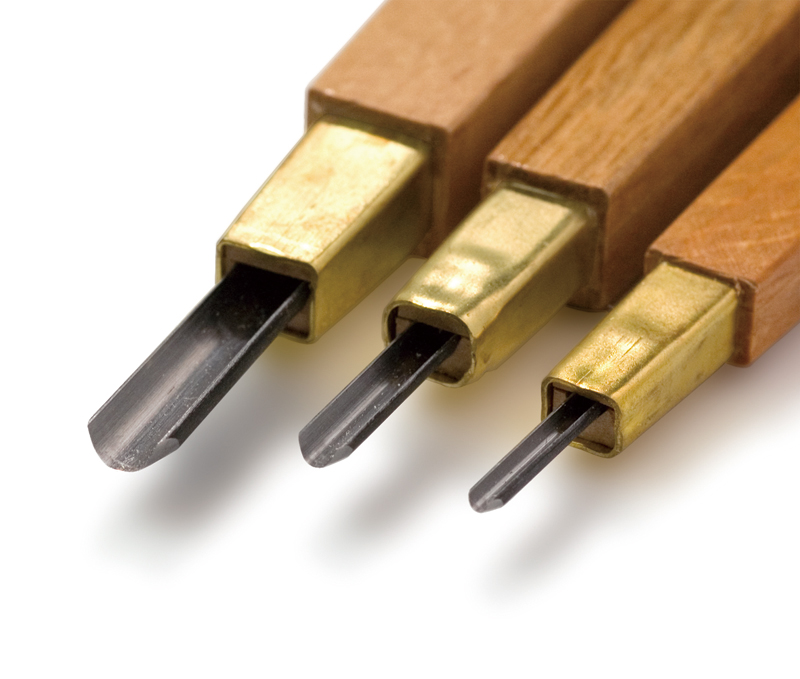
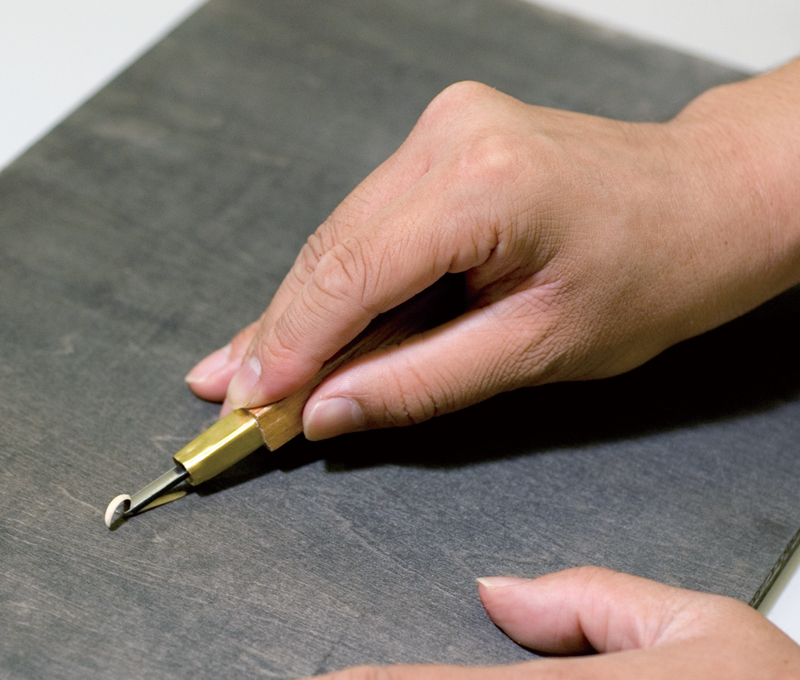 How to hold a komasuki
How to hold a komasuki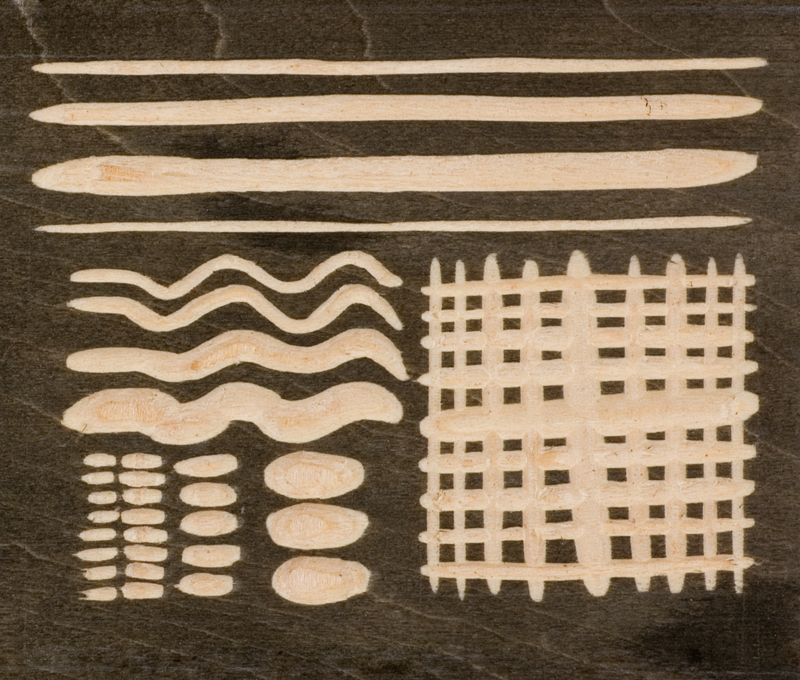 Examples of komasuki carvings
Examples of komasuki carvings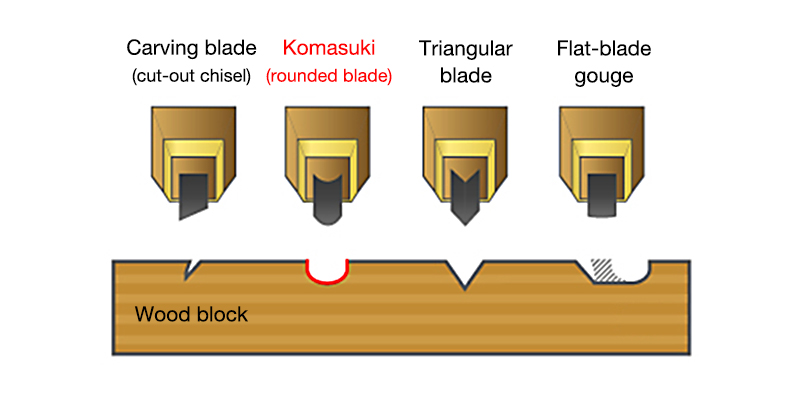 Cross-section of a komasuki-carved block
Cross-section of a komasuki-carved block
